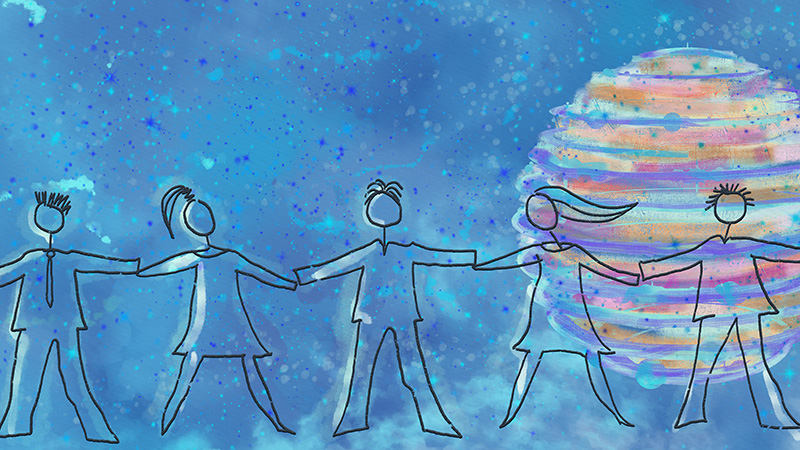Sections / Articles
Nurturing a Global Mind
Help students learn to empathize and form connections with people from all sorts of backgrounds.

pronoia - stock.adobe.com
Communicator
August 2020, Volume 43, Issue 12
Teaching students to be global citizens—or moving them beyond a preliminary understanding of culture—means helping them learn to empathize and form connections with people from all sorts of backgrounds.
In the first study of its scope, a team at Research Schools International examined global competency from 150 Round Square Schools, a global network of public and private schools that have an expressed commitment to global citizenship. From these assessments, researchers identified five learning activities that correlated significantly with the development and enhancement of global competencies such as awareness, respect, self-efficacy, adaptability, attitudes toward immigrants, interest in other cultures, and openness to diversity.
The following are the five learning activities, with tips for implementing them in your school:
- Volunteering services to help people in the wider community. Before engaging in volunteer work in a community, students need to be aware of the challenges the community is facing and empathize with its members. Service activities should be frequent and allow students to form real bonds with community members.
- Participating in year-round events that celebrate cultural diversity. Events can range from conferences to holiday celebrations, but they should work to spark curiosity in students and promote respect. Contextualize events so they are part of a larger educational strategy; have a learning goal or objective. Create opportunities for students to become curious about other cultures to create intrinsic motivation for participation.
- Learning how people from different cultures can have different perspectives on some issues. Offer activities inside and outside the classroom that focus on other cultures, such as international exchanges, diversity clubs, and forums. Provide professional development opportunities to teachers to train them how to support discussions and instruction around diversity and diverse perspectives.
- Participating in classroom discussions about world events. Set aside time for discussion of what’s happening in the world today. Read news sources from around the world and discuss current events; talk about bias and trust.
- Learning to solve conflicts. Create activities that promote collaboration and lead to opportunities to resolve conflicts. These activities might include whole-class discussions, Model United Nations, reading and discussing world literature, group presentations, performances, and debates.
Key Takeaways
Consider the amount of exposure students have to other cultures and languages in the school setting, and devise opportunities to expand it.
Students still need structure and context around experiences with other cultures—whether that’s in the existing curriculum or volunteer work. Opportunity for meaningful discussions is key to ensuring engagement.
Conversations around global issues help facilitate meaningful learning. Teachers also need professional development opportunities to ensure they can structure discussions effectively and explore complex and difficult topics around global issues.
This article was adapted from “Nurturing a Global Mind: What Educators Can Do to Help Students Become Global Citizens.”
---
Copyright © 2020. National Association of Elementary School Principals. No part of the articles in NAESP magazines, newsletters, or website may be reproduced in any medium without the permission of the National Association of Elementary School Principals. For more information, view NAESP's reprint policy.